The Great Math Mystery Nova
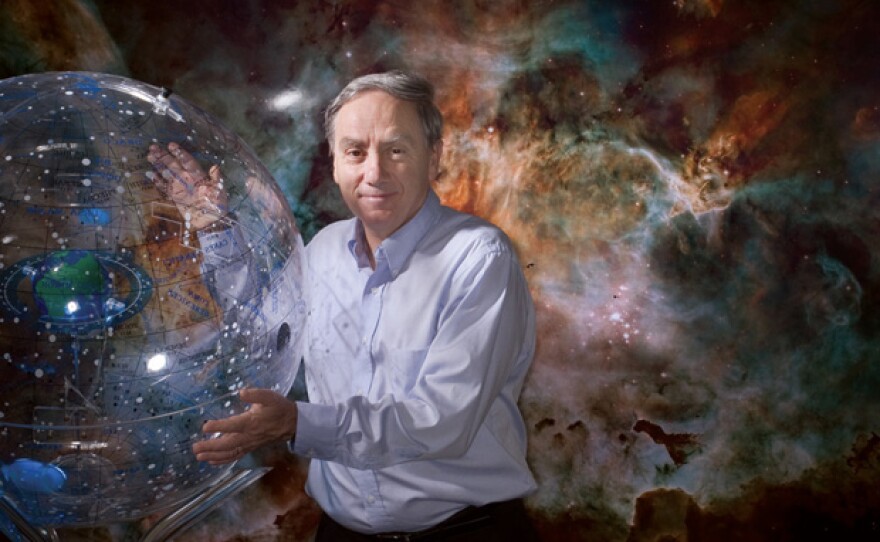
Courtesy of NASA ESA J. Coyle Jr. for STScI
Is math invented past humans, or is it the language of the universe?
Underlying culture'southward stunning advancements and the technological wonders of the modern age is something deep and mysteriously powerful: mathematics.
But where does math come up from and why does it piece of work and then well to explain our physical world? Is it humankind's clever fob, or the deeply embedded language of the cosmos?
In "The Great Math Mystery," NOVA and a colorful bandage of the world's elevation mathematicians, physicists, and engineers embark on a mathematical mystery tour — a provocative exploration of math's astonishing power as it has evolved over the centuries — to ponder a profound question: is math an invention or a discovery?
Whether nosotros retrieve nosotros're good with numbers or not, nosotros all use math in our daily lives.
NOVA sheds fascinating light on how math works in our brains and why information technology works so well.
Math is essential in art, compages, and music. It is evident everywhere in nature and the patterns of our world — from the spiral in the center of a sunflower, to the swirl of a nautilus shell or the whirlpool of a galaxy.
Math reveals the secrets backside the elliptical orbits of the planets and the electromagnetic waves used in the first wireless radio transmissions.
It predicts the discovery of the Higgs boson and the successful landing of rovers on Mars.
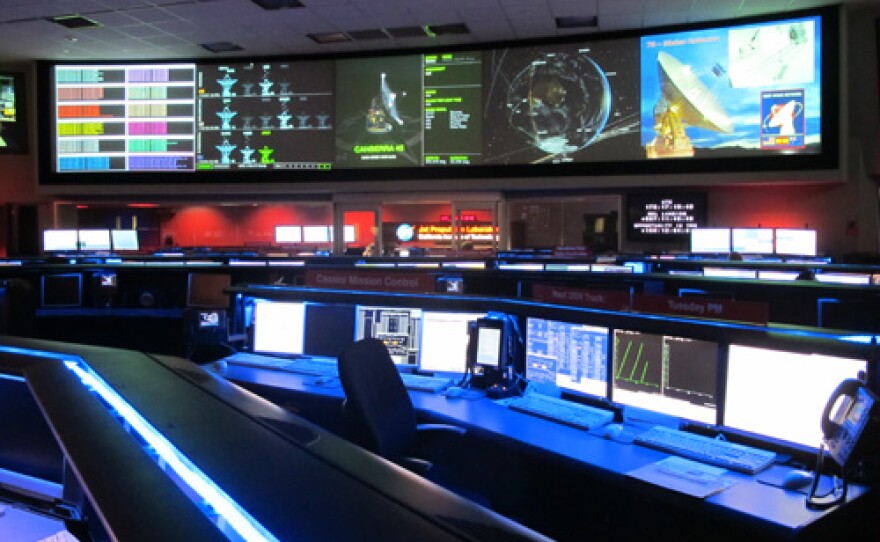
Courtesy of Cara Feinberg
NOVA spins through stunning examples of math'south ability that permeate history, drawing on Pythagoras, Galileo, Sir Isaac Newton, Albert Einstein, and more — and taps into the earth'south top modern-day minds, who continue to puzzle over whether math's tremendous potency is the hidden language of the universe or all in our heads.
Mario Livio, a notable astrophysicist who helps operate the Hubble Space Telescope from Space Telescope Science Institute, has spent much time wrestling with such questions and sees an uncanny accuracy in the style mathematics tin reveal the secrets of the universe, making it seem an inherent part of nature.
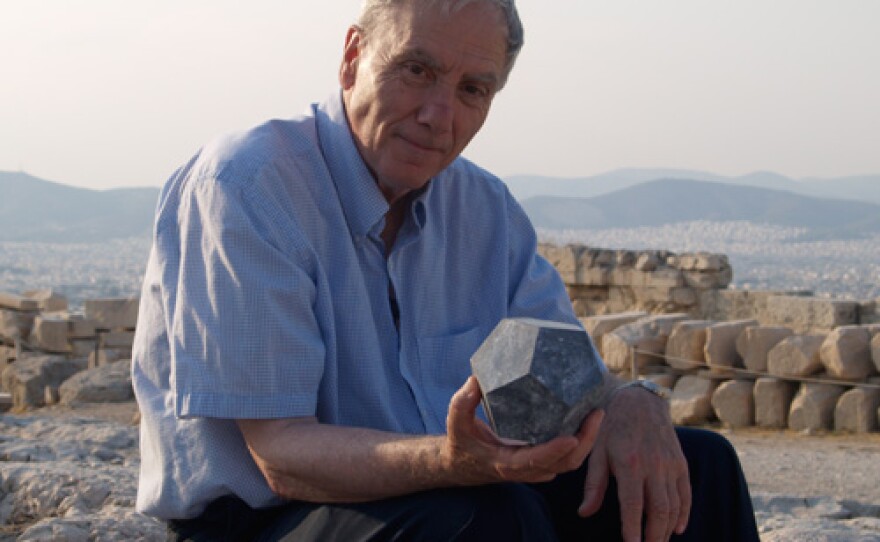
Courtesy of WGBH
Livio shows viewers through his Hubble enquiry how centuries old, uncomplicated mathematical equations and groundbreaking insights on falling bodies and gravity by early scientists such as Galileo and Newton still permeate the universe as laws of science that tin can be applied to distant galaxies.
NOVA besides looks at various patterns in nature and whether plants and animals have a key ability to perceive numbers.

Courtesy of Cara Feinberg
The film looks at the intriguing serial of numbers known as the Fibonacci sequence.
Statistically, these occur frequently in botany, in the spirals on the lesser of pino cones, in the two sets of spirals in the seeds on sunflower heads, in the number petals on various kinds of daisies (e.chiliad., iii, 5, 8, xiii, 21, 34, 55).
In another segment, Duke University's Elizabeth Brannon shares the latest research on how well lemurs empathize quantity and the abstract essence of numbers using fascinating computer recognition tests.
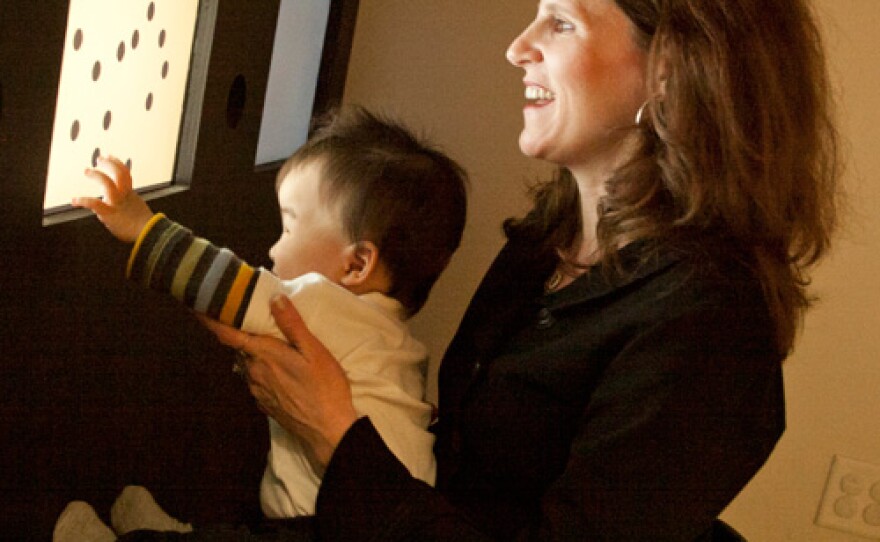
Courtesy of WGBH
NOVA also looks at Pi ("π") as simply i case of a vast interconnected web of mathematics that seems to reveal an often subconscious and deep order to our world.
Pi doesn't but have to do with circles, but appears in probability calculations and in many phenomena with wave-similar characteristics.
Pi tells usa which colors should announced in a rainbow and how centre-C should audio on a Pianoforte; Pi shows up in apples in the way cells grow into spherical shapes or in the effulgence of a supernova.
The affinity between music and math is also examined in the movie in a sequence featuring acclaimed jazz bassist Esperanza Spalding, who demonstrates on her upright bass the discovery by sixth century Greek scholar Pythagoras related to simple ratios in vibrating strings of varying lengths.
To him, these uncomplicated mathematical relationships produced the well-nigh beautiful, harmonious musical tones.
To expect at what math does to the brain, NOVA studies the MRI images of a teen math prodigy who scored a perfect 800 on the SAT for Math at age 11 and compares the neuron activation in his parietal lobes with that of kids with average performance scores.
To illustrate the amazing predictive power of mathematics, NOVA selects examples that yielded highly tangible and relatable results, which are borne out all around us in the daily devices we use that require invisible waves of energy to communicate: televisions and Television remotes, radios, cell phones, satellites, baby monitors, Wi-Fi, garage door openers and GPS.
All of these are a event of a prepare of mathematical equations published in the 1860s by a Scottish mathematical physicist, which then inspired the piece of work of Guglielmo Marconi, who afterwards ushered in the era of the wireless telegraph and radio at the turn of the century.

Courtesy of WGBH
NOVA also travels to CERN, home to the globe'due south largest and most powerful particle accelerator, located deep cloak-and-dagger in Switzerland, to show viewers where the Higgs boson, the and so-called God particle, was confirmed — another significant discovery based on mathematical predictions.
Many of the world-class mathematicians and physicists featured in the film acknowledge that math feels more similar an inherent truth that they detect, rather than an invention — including British mathematician and Barnard College professor Dusa McDuff; mathematician and Columbia University professor Maria Chudnovsky; theoretical physicist and University of Maryland professor Jim Gates; and Christophe Golé, mathematician and Smith College professor.
Others, like physicist and MIT professor Max Tegmark, become a step farther, arguing that mathematics is our physical reality.
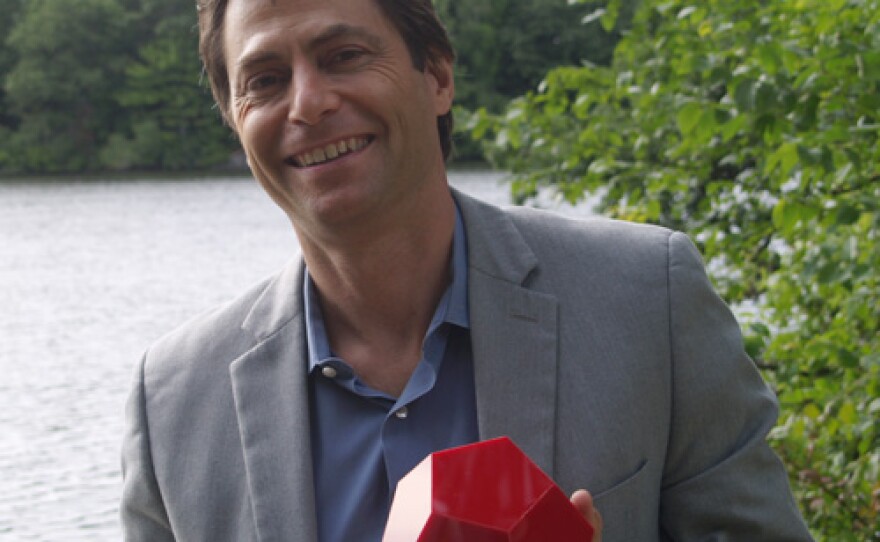
Courtesy of WGBH
Max perceives a real world that doesn't just accept some mathematical properties, merely only mathematical properties.
As a dynamic and clever visual to demonstrate show viewers how Max might perceive the real concrete world and the essence of reality to be purely mathematical, NOVA creates a special animation version of Max, "shrinking" him downwardly and "inserting" him into a computer video game.
Several others fall more into the Einstein army camp — who thought math to be a product of human thought, fifty-fifty though he wondered how information technology did so well in explaining the universe every bit we see it.
The tardily Eugene Wigner, Nobel laureate in physics, spoke of "the unreasonable effectiveness of mathematics" in describing the physics of the universe, calling it "a wonderful gift…we neither understand nor deserve."
It is an opinion shared past particle physicist and Stanford Academy professor Savas Dimopoulos who calls mathematics "a retainer far more capable than [we] are", i that if you "inquire nicely...will carry you all the way to the truth."

Courtesy of WGBH
Adam Steltzner, the lead landing engineer of NASA's Mars Curiosity Rover Project, demonstrates that "unreasonable effectiveness" using hydraulic blast lifts and custom-built ramps to show viewers how the mathematical expression of Galileo's Renaissance discovery about the law of falling bodies is the same relationship used hundreds of years later by him and his team to land the "Curiosity" rover on the surface of Mars.
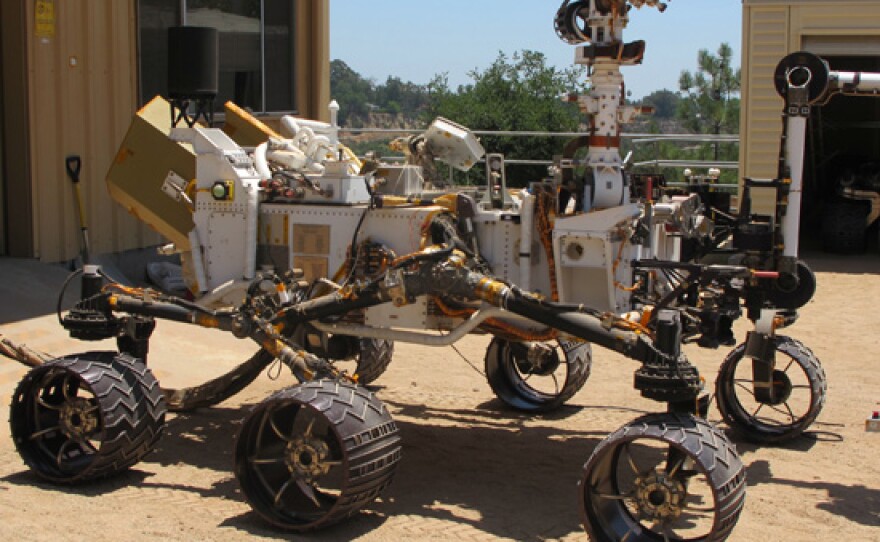
Courtesy of Cara Feinberg
Only in that location are likewise some experts — such as calculator scientist/physicist Stephen Wolfram and physicist/engineer Derek Abbott—who indicate out the limitations of mathematics in explaining complex areas for which the models and prediction methods are "reasonably ineffective" — including meteorology and weather forecasting beyond a few days, human psychology, parts of biology, such every bit the interaction of neurons on the encephalon, and financial systems like the stock market.
Even Adam Steltzner admits that while engineers see math as a powerful tool, they are also keenly aware of its shortcomings.
When the elegance of math meets the messiness of reality, engineers shift into the domain of approximation rather than absolutes.
Precision may be sacrificed for practicality if it garners results, making mathematics appear a very homo invention.
For many, the answer may be that there are elements of both discovery and invention.
In the end, the puzzle may never be completely resolved and the question remains a corking math mystery.
This episode premiered April 2015 on PBS.
Picket ON YOUR SCHEDULE:
This full episode is available to stream on need.
Episodes are available for viewing on demand for a limited fourth dimension after each broadcast. Extend your viewing window with KPBS Passport, video streaming for members ($60 yearly) using your computer, smartphone, tablet, Roku, AppleTV, Amazon Burn or Chromecast. Learn how to activate your benefit at present.
JOIN THE CONVERSATION:
NOVA is on Facebook, and you can follow @novapbs on Twitter. #NOVAnext
CREDITS:
A NOVA production for WGBH Boston. Senior Executive Producer is Paula Due south. Apsell.
The Great Math Mystery Nova,
Source: https://www.kpbs.org/news/arts-culture/2015/04/14/nova-great-math-mystery
Posted by: walkupthoon1994.blogspot.com


0 Response to "The Great Math Mystery Nova"
Post a Comment